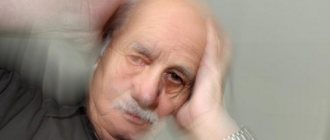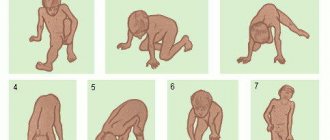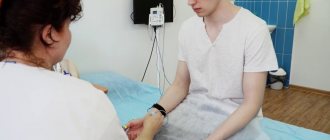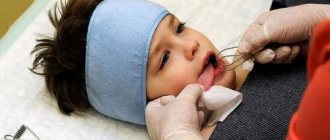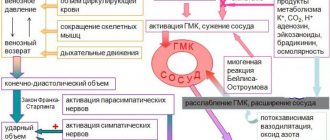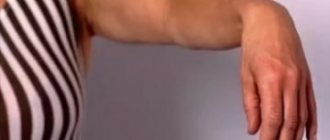Forms of muscular dystrophy
Muscular dystrophy is characterized by progressive symmetrical muscle atrophy. The disease in all its forms and manifestations takes a long time. Muscle weakness in this case is due to the lack of an important protein - dystrophin. It is important for humans as it connects the muscle fiber skeleton with the extracellular matrix.
The absence of dystrophin causes constant fatigue, gait disturbances, problems with swallowing and coordination of movements. In total, there are more than 30 forms of the disease. They differ in character, severity, and symptoms.
9 most common ones:
- Duchenne muscular dystrophy. This is the most common form of pathology among children. Mostly only boys suffer from it. In addition to problems with coordination of movements and walking, patients often fall, walk on tiptoes or wobble, and suffer from mental retardation. Usually detected at the age of 2-3 years. The muscles gradually change in size, become weaker, and cannot perform their functions. In most cases, by the age of 12-13 years the patient requires a wheelchair. The life expectancy of such people usually does not exceed 20 years.
- Becker muscular dystrophy. The symptoms in this case are approximately the same as in the previous form. But here the symptoms are more mild, and the progression of the pathology is slowed down. This form of dystrophy is diagnosed in childhood and adolescence and affects only men. The average life expectancy of such patients is only 10 years longer than with Duchenne disease.
- Myotonic disorders. This is the most common form of the disease among adults and is diagnosed in childhood or adolescence. Such disorders affect not only the muscles of the arms and legs, they negatively affect the heart, nervous and hormonal systems, vision, and gastrointestinal tract. The disease often progresses slowly.
- Humoscapulofacial myopathy. The pathology affects the muscles of the face, shoulder blades, arms and legs. The diagnosis is usually made in childhood and occurs in both boys and girls. The disease develops slowly, but is characterized by a sharp deterioration and periods when the person’s condition improves. Typically, most patients with this diagnosis are able to work and move independently, although they have problems with walking, chewing and swallowing.
- Erb-Roth muscular dystrophy affects both boys and girls. It is usually diagnosed in childhood. Most patients live to be 40 years or more. Symptoms first develop in the thighs and then spread to the arms and legs.
- Congenital pathology. This muscle dystrophy is diagnosed in newborn age. It occurs in both girls and boys. This form of the disease exists in two variants: myosin deficiency dystrophy and Fukuyama disease. Both of them are severe and have pronounced symptoms. The child remains disabled forever, suffering from seizures and pathological changes in the brain.
- Distal dystrophy. This form is a rare disease that manifests itself in adulthood. The progression of the pathology is slow, which gives people a chance to lead a normal lifestyle and live to old age. The muscles of the limbs suffer the most from it.
- Dystrophy of the muscles of the eyeball and pharynx. Usually diagnosed at the age of 40-50 years. Causes problems with swallowing and chewing food, weakness of the eye muscles and related symptoms. In the later stages it causes suffocation and spasms, and relapses of pneumonia.
- Emery-Dreyfus muscular dystrophy. The disease is quite rare, but different from other forms. It appears in adolescence among boys. It affects the limbs and causes pathological changes in the heart even in girls who are only carriers of the gene and do not suffer from severe symptoms. Usually such patients can live to adulthood.
It is noteworthy that this is a hereditary disease that can appear at any age. Most often, the first symptoms are detected during preventive examinations by specialists in early childhood. According to statistics, boys suffer from the pathology more often than girls.
The prognosis for such patients depends on many factors. Someone lives with the disease for years, only maintaining their condition and slowing down the progression of muscle atrophy. Others quickly lose the ability to lead a normal lifestyle, cannot walk independently and often need a wheelchair.
Duchenne muscular dystrophy
(pseudohypertrophic muscular dystrophy) is the most common form of this disease in children. The cause of the disease is a genetic defect localized on the X chromosome (one of the two chromosomes that determine a person’s sex). Women with a defective gene pass it on to their children, but they themselves usually have no symptoms of dystrophy. Boys who receive the defective gene inevitably develop muscle weakness between the ages of two and five.
Also on topic:
MUSCLES
The large muscles of the lower extremities and pelvic girdle are primarily affected. Degeneration then spreads to the muscles of the upper half of the body, and then gradually to all major muscle groups. A characteristic manifestation of the disease is pseudohypertrophy of the calf muscles, i.e. their increase due to fat deposition and proliferation of connective tissue. In contrast, with true muscle hypertrophy, the volume of muscle tissue itself increases.
Duchenne muscular dystrophy is one of the most severe and rapidly progressing forms. By the age of 12, patients usually lose the ability to move, and by the age of 20, most of them die.
Symptoms and causes of muscular dystrophy
The causes of muscular dystrophy lie in a chromosomal mutation. The X chromosome is affected, but each form of the disease has its own characteristics and is characterized by a unique set of mutated genes. Moreover, they all contribute to a decrease or complete cessation of the synthesis of dystrophin, a protein necessary for muscles to function normally.
It is this protein that is responsible for their growth and recovery, although its content is very small - only 0.002% of the total amount of proteins in muscles. The lower the amount of dystrophin, the more the disease progresses and the severity of the symptoms.
Among the main symptoms accompanying all forms of pathology, it is worth noting the following signs:
- muscle weakness that progresses over the years;
- falls, clumsiness, changes in gait (a person begins to waddle and cannot control his gait);
- problems with speech, breathing, swallowing, chewing food, coordination of movements;
- muscle pain – the lower leg especially suffers;
- difficulties with memory, concentration, learning;
- cramps and contractures.
If you find yourself with the symptoms listed above, make an appointment with a neurologist at a medical clinic.
Make an appointment The application is preliminary. An operator will contact you to confirm your appointment.
Your application has been accepted, our specialists will contact you shortly. Thank you for contacting the medical
Causes of dystrophy
Dystrophic processes are based on mutations of the autosomal dominant genome, the main function of which is to synthesize and regenerate in the human body a specific protein necessary for the full formation of muscle fibers.
Forms of pathology
Based on the type of metabolic disorders, dystrophy is divided into protein, carbohydrate, fat, and mineral; by prevalence - local and general; by localization - cellular, extracellular, mixed; according to etiology - congenital and acquired. Myodystrophy is a group of chronic diseases of muscle structures (mainly skeletal muscles).
Congenital forms of muscular dystrophy have an autosomal dominant pattern of inheritance. At the same time, the body almost completely lacks dystrophin, a protein necessary to maintain muscle structure. In some forms of pathology, it is produced in sufficient quantities, but does not function properly.
Progressive muscular dystrophy is an essentially progressive degeneration of muscle tissue that develops without damage to any part of the nervous system and leads to severe atrophy and weakness of the muscles of a certain group. Such diseases are genetically determined.
Progressive muscular dystrophies, Duchenne and Becker, are X-linked recessive diseases that develop due to dystrophin deficiency. Its production is encoded by the DMD gene (marker Xp21.2).
Emery–Dreyfuss progressive muscular dystrophy is associated with several causative genes encoding ubiquitous proteins. These are the EMD gene in the Xq28 locus, the FHL1 gene in the Xq26.3 locus, the LMNA gene in the 1q21.2 locus, and the TMEM43 gene.
Landouzi-Dejerine progressive muscular dystrophy is associated with the D4Z4 deletion on chromosome 4 4qA, mutations of the SMCHD1 gene at the 18p11.32 locus.
We have prepared for you a list of studies that will help you deal with this problem:
90 working days
Panel “Inherited metabolic disorders”
35000 ₽
More details
Diagnosis and treatment
If there are symptoms of muscular dystrophy, the patient is sent to see a neurologist. A specialist of this particular profile selects methods and methods for diagnosing the disease, a scheme of supportive and restorative therapy.
In addition to a personal conversation and medical history, the following diagnostic measures may be required:
- enzyme analysis to detect elevated levels of creatine kinase - this indicator signals muscle damage;
- genetic research to identify mutations on the X chromosome;
- monitoring the functioning of the heart and lungs to prevent life-threatening conditions;
- muscle tissue biopsy to determine the severity of the disease;
- electromyography, which measures muscle activity.
In addition, you may need to take a blood test, urine test, or a hardware scan to rule out other diseases with similar symptoms.
To date, there are no effective treatments for this disease. A neurologist and other specialists will help you choose methods and procedures that will slow down the progression of the disease, but will not eliminate it completely. Treatment is symptomatic. This may include:
- taking corticosteroids and painkillers;
- vitamin and mineral complexes;
- drugs for the heart and lungs.
In addition, medical procedures may be required, including heart and spine surgery and assisted ventilation. And physiotherapy and exercise therapy will help strengthen the muscles of the limbs, maintaining the ability to walk and move for as long as possible.
Myotonic muscular dystrophy
(Steinert's disease) is the most common form of muscular dystrophy in adults. It is caused by a defective gene on chromosome 19. Men and women are affected equally and can pass the genetic defect on to their children. The disease manifests itself at any age, including infancy, but most often between 20 and 40 years. The first symptoms are myotonia (slow muscle relaxation after contraction) and weakness of facial muscles; Damage to the muscles of the limbs and other parts of the body is also possible. The progression of the disease occurs slowly in most cases, and complete disability may occur no earlier than after 15 years.
The peculiarity of this disease is that in addition to voluntary muscles, it also affects smooth muscles and cardiac muscle.
Clinical picture of muscular dystrophy
Emine's first sign of Duchenne myopathy was weakness. She began to get tired with normal physical activity. Emine's earliest complaints were:
- Difficulty climbing stairs.
- Fatigue when running, long walking.
- Emine began to fall often.
- Myalgia began to appear in the legs (pain in the muscle area), sometimes in combination with painful spasms.
- Gradually walking began to become difficult.
Emine could not get up from the low chair without using her hands. When getting up, the woman resorted to using auxiliary techniques: “standing up with a ladder”, “climbing on one’s own” - Govers’ technique. A few years later, Emine could not get up from her haunches without help. The patient could not climb stairs.
After my influence on Emine’s muscles, she rises to the 17th floor without using her hands, immediately takes the elevator down and rises again to the 17th floor without getting tired!
Muscle atrophy develops mainly in the pelvic girdle and thighs (therefore, the effect on Emine’s muscles using Nikonov’s method was aimed at these areas).
The muscles of the upper limbs begin to atrophy later. Emine said that she could not pour herself tea or comb her hair. See the results of treatment for muscular dystrophy in the video below:
Subscribe to channels
Clinic channel
Personal channel
An obligatory symptom is pseudohypertrophy of the gastrocnemius muscles. Emine had the same muscle condition. Pseudo-hypertrophied muscles reflect the body’s attempt to compensate for the weakness of the pelvic girdle muscles, however, as restrictions on movement in the legs increase, the hypertrophied muscle tissue begins to swell.
The presented video is not educational. The video is the result of the work. Repeating procedure techniques without training from Dr. Nikonov may result in serious injury.
All muscle changes are observed symmetrically on both sides. I continued to work on Emine’s muscles with my method (Nikonov’s method) and here is the result:
Emine squats and stands up 6 times already!
In the photo : localization of muscles predominantly affected by myodystrophy in Emine:
